Victorian and New South Wales agencies and community members have come together to talk about the Snowy River.
The Snowy Advisory Committee (SAC) along with representatives from the NSW and Australian Government Department of Climate Change, Energy, the Environment and Water (DCCEEW), Victorian Department of Environment, Energy and Climate Action (DEECA), Snowy Hydro and the East Gippsland Catchment Management Authority (CMA) visited the Snowy River at Marlo and Orbost to discuss environmental flows and the Snowy River Estuary.
“East Gippsland CMA has been working with NSW DCCEEW to incorporate flow recommendations that improve the condition of the lower Snowy River and estuary” said East Gippsland CMA Chief Executive Officer, Bec Hemming.
“These recommendations are about maintaining an open entrance during late summer and autumn, a time when historically the estuary has closed due to reduced catchment and environmental flows.”
The daily amount of water released from the Jindabyne dam is planned twelve months in advance by the NSW Government who take advice from the SAC and other organisations. As part of the 2024/2025 environmental water release plan, a trial will be conducted to monitor estuary mouth behaviour in response to varying volumes of environmental water releases over specific time intervals.
“This monitoring aims to assess the impact on both the entrance mouth condition and water quality in adjacent wetland and waterways during late summer and autumn of 2025.” Bec said.
As well as agencies coming together, a series of presentations to community members was held at the Marlo Angling Club. The presentations included topics such as the importance of environmental flows, planned water releases, fish health and the trial around the estuary mouth.
Community members expressed their strong connection to the river and desire to maintain an open entrance which has multiple benefits to them including reducing flooding impacts and avoiding impacts to native fish and other aquatic species.
To reiterate the importance of water releases at the right time for fish and estuary health, a canoe trip into Cabbage Tree Lagoon was made for a firsthand experience of a site which provides important fish populations.
The engagement was funded as part of the Victorian Government’s $248 million investment into improving the health of waterways and catchments in regional Victoria.
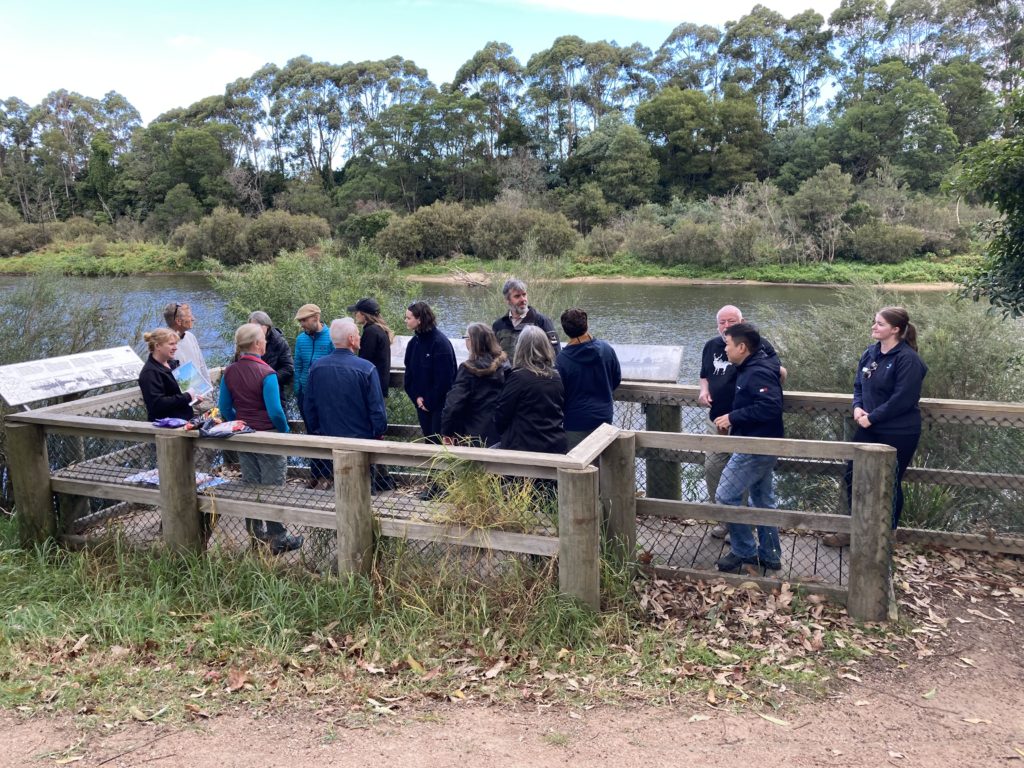
On a perfect May morning, community members gathered along the banks of the Mitchell River for the East Gippsland Catchment Management Authority’s (CMA) Mitchell River Community Paddle.
The sun was shining, warming participants as they prepared for the paddle along the lower Mitchell River. Participants of all ages donned life jackets, paddles in hand and set out on kayaks from the Picnic Point reserve to Howitt Park.
The event was organised to highlight the East Gippsland CMA and partners’ river health projects along all reaches of the river.
“Our rivers are lifelines for our communities, providing habitat for wildlife, recreational opportunities, and essential resources” said East Gippsland CMA CEO, Bec Hemming.
Ongoing work includes enhancing a targeted priority area along the Mitchell River floodplain, spanning from Glenaladale to Lind Bridge just upstream of Bairnsdale. Priority frontages along the lower Mitchell River have been identified for stock exclusion fencing initiatives. Weed control and revegetation efforts will also be carried out.
Over the past three years, a collaborative effort involving multiple partners has concentrated on enhancing and diversifying an area along the lower Mitchell River, from the Lind Bridge to the Highway Bridge.
The dedicated efforts of partners including Gunaikurnai Land and Waters Aboriginal Corporation (GLaWAC), the Bairnsdale Urban Landcare Group, Eastwood Landcare Group, Gippsland Grammar Junior Campus and the East Gippsland Shire Council has seen improved species habitat, wetland restoration, weed control and improved community access to recreational and community assets.
“By working together, we can continue the work we do ensuring our rivers remain resilient for generations to come”, said Bec.
These projects are funded as part of the Victorian Government’s $248 million investment into improving the health of waterways and catchments in regional Victoria.

The East Gippsland Catchment Management Authority (CMA) was thrilled to be part of the Wild Harvest Seafood Festival in Mallacoota last week.
The East Gippsland CMA was able to contribute to the festival’s activities by hosting a walk and talk, boat tours and a presence at the popular market in the township of Mallacoota.
On the first evening of the event, the East Gippsland CMA led the walk and talk session. Participants explored the bushland of the Casuarina Walk and coastal area of Davis Creek. Guided by East Gippsland CMA staff, who shared insights into the region’s unique flora and fauna, with a focus on bushfire recovery and the resilience of local ecosystems. Attendees learned about native plant regeneration, habitat restoration, and the vital role of biodiversity in maintaining ecological balance.
The following day, East Gippsland CMA hosted a boat tour on the Mallacoota Lake. Aboard the MV Loch Ard participants were treated to the beautiful scenery of Mallacoota from the water. The tour highlighted the importance of keeping our catchments healthy to protect the best in Far East Gippsland. An absolute highlight was seeing a pair of sea eagles circling above and being treated to watching one of them feeding off the water.
The market, showcasing local seafood and wares, was held with perfect weather for an outdoor activity. With many partner agencies and community groups set up together with Black Snake Productions and their array of native wildlife, market participants got to learn about wildlife of the local area and at the same time able to chat to agency staff and volunteers about their environmental initiatives.
The grand finale was a boat tour along the Wallagaraugh and Genoa rivers. Participants were enthralled by the diverse birdlife that call these waterways home. From graceful pelicans to vibrant kingfishers, fish-feeding cormorants, and soaring eagles, the experience was made even more exciting by the thrilling sight and distinctive sound of a glossy black cockatoo as it flew overhead.
“We are thrilled to be part of this community event,” said East Gippsland CMA’s CEO, Bec Hemming.
“It’s a wonderful opportunity to connect with local Mallacoota residents, the broader East Gippsland community and visitors from Victoria and NSW to highlight the great work undertaken by landholders, community members and agencies to preserve this precious far east region.”

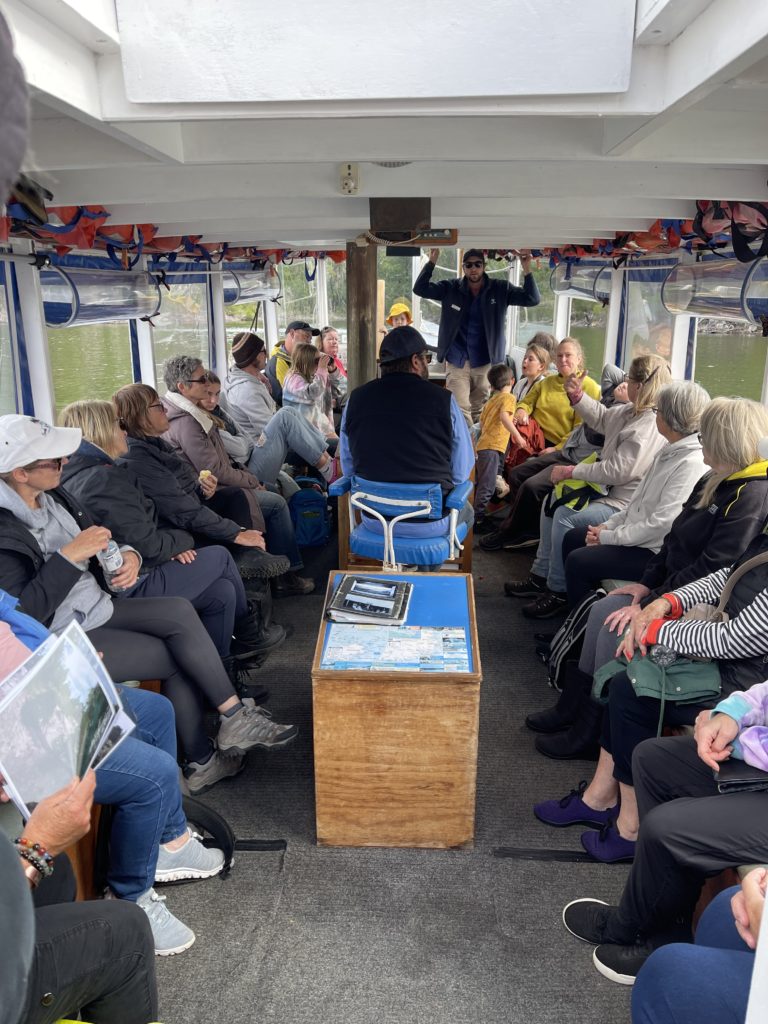
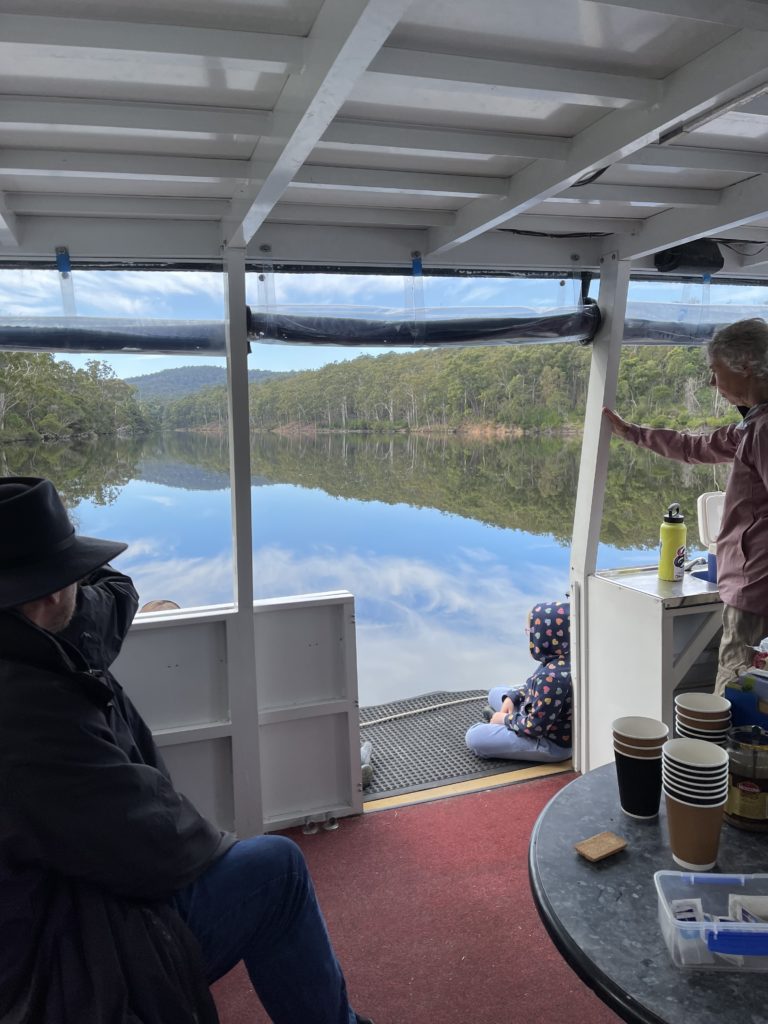

Buchan Primary School students understand the vital role their local river plays, including supporting a diverse range of plants and animals including fish.
Recently, these students participated in releasing native Southern Pygmy Perch near the newly constructed Buchan fishway, contributing to the river’s ecological health.
As well as the important fish release, the students had the opportunity to witness firsthand how fish ecologists study fish living in the river. During a demonstration, and using specialist equipment, ecologist Jackson caught several species. Measurements and sizes of the fish were noted, as was their overall well-being before being returned to the river.
The numbers and diverse species of fish monitored highlighted the vibrant and healthy aquatic environment that exists in the Buchan River. Species found included Tupong, Common Galaxias, Australian Smelt, Longfinned Eel and the endangered Cox’s Gudgeon.
East Gippsland Catchment Management Authority Chief Executive Officer, Bec Hemming said, “Finding an endangered species is very exciting, and the fact that it is utilising the fishway is highly encouraging. The ability to migrate from the estuarine reaches to the fresh water in the upper reaches is crucial for its survival.”
“Studying fish species and populations near the newly constructed fishway provides valuable insights into the types of fish successfully migrating upstream. Previously, this migration would have been more challenging due to the barrier caused by the log weir.”
As well as supporting native animals and plants the Buchan River supports many recreational activities and is a popular place for visitors. The area around the fishway is used by locals and visitors alike.
“We value the contribution by the community in maintaining the health of our waterways and seeing the kids learning and enjoying themselves in their backyard at the same time is fantastic.” Said Bec.
This project is funded as part of the Victorian Government’s $248 million investment into improving the health of waterways and catchments in regional Victoria.
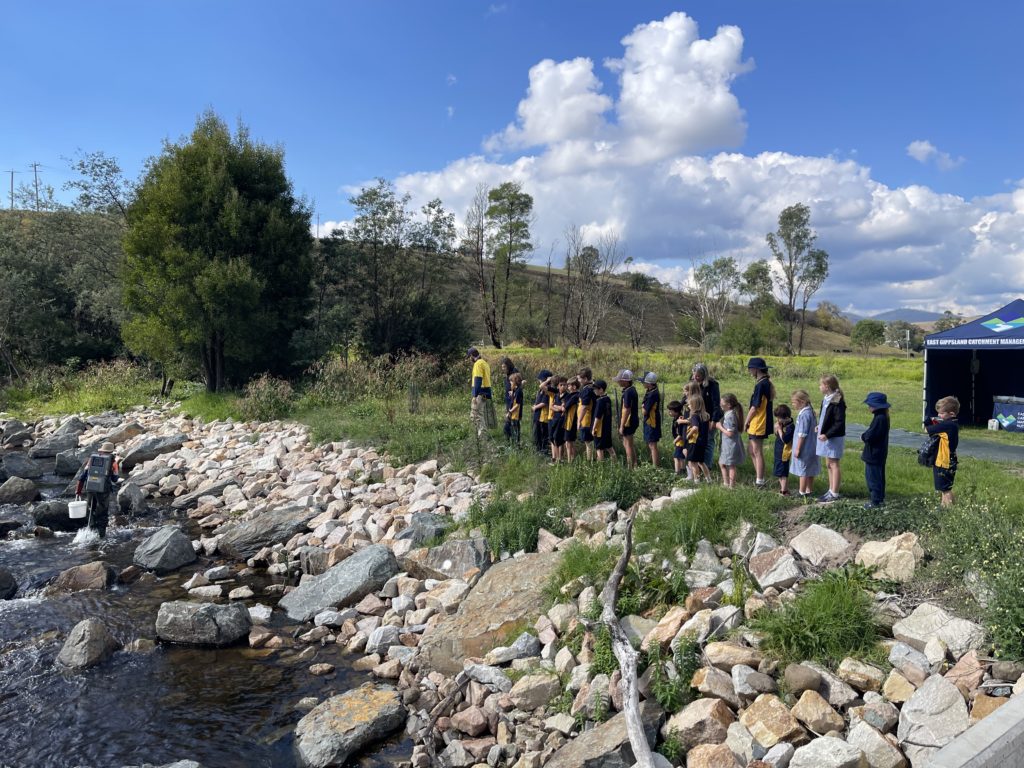
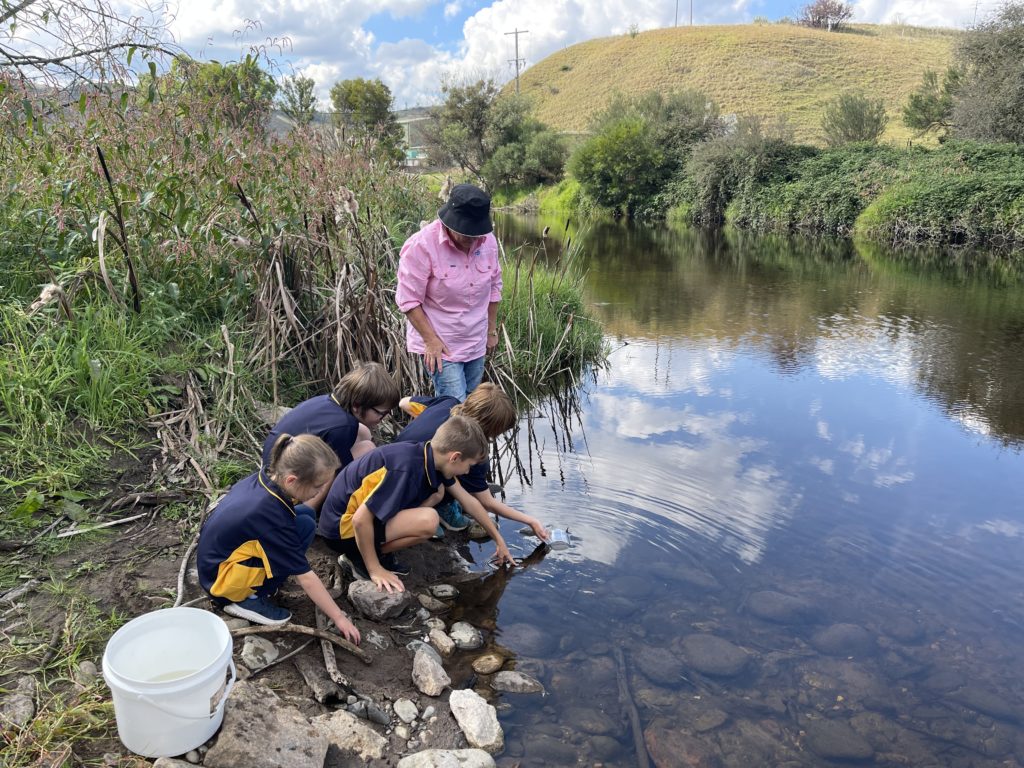
Vic Catchments, the peak body for Victoria’s ten Catchment Management Authorities, including East Gippsland, has won the Nature Positive category of the 35th National Banksia Sustainability Awards.
The Awards celebrate trailblazers in environmental and social sustainability, with winners across 14 categories spanning travel, agriculture, conservation and more announced at the gala event – all recognised as true champions of sustainability and social impact.
Cath Jenkins, Chair of Vic Catchments, accepted the award at the gala event held in Melbourne. “Vic Catchments is thrilled and humbled to be winners of this highly competitive category and congratulate all the other finalists,” said Ms Jenkins on behalf of Victoria’s ten Catchment Management Authorities (CMA).
“For over 25 years CMAs have been at the forefront of working with communities and partners to deliver incredible results for catchments across Victoria. It’s a delight that it’s been recognised by such a prestigious organisation.”
East Gippsland CMA CEO, Bec Hemming, emphasised the importance of partnerships stating, “Partnerships with Aboriginal groups, landholders, community and government play a vital role in improving waterway health into the future and the success of this work is shared.”
“Together we have achieved great outcomes for our natural environments, catchments, agricultural landscapes and communities in our 26 years, and we are only just getting started.”
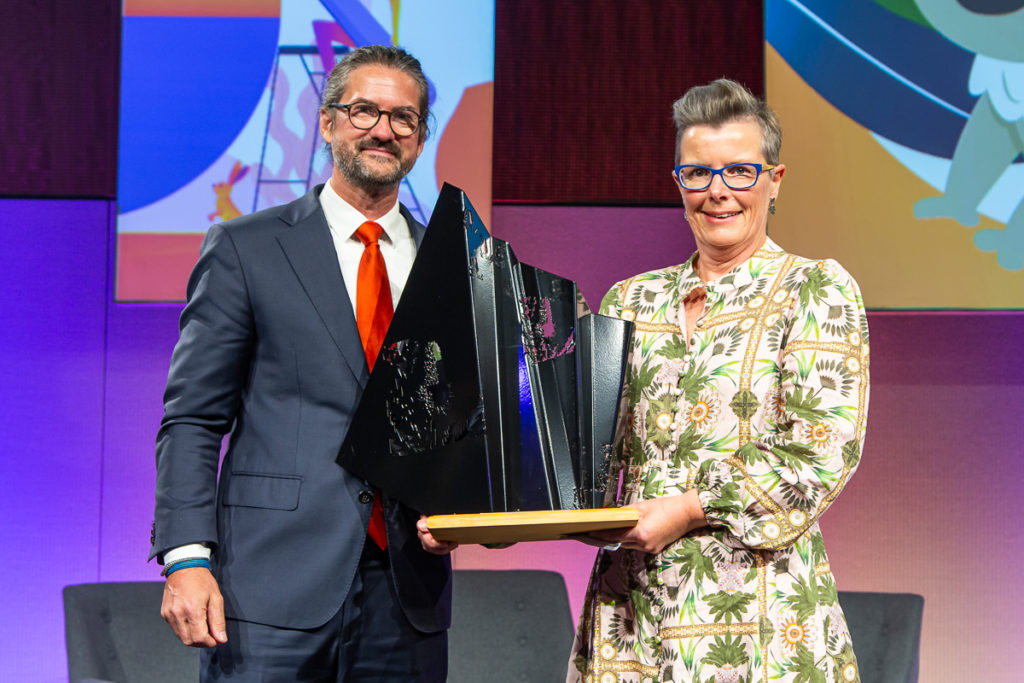
Several environmental projects are complete, enhancing the Cann River’s ecosystems and improving the health of the floodplain.
Maintenance work has involved ongoing weed control, revegetation, and condition monitoring along the river. These efforts will ensure the continuation of good river health while also strengthening partnerships with the local community.
The Cann River Landcare Group has been tirelessly working on an area within the Cann River Caravan Park. Their efforts have transformed the river access into a great spot for locals and visitors. However, recent high rainfall events caused some erosion to the improved area. The group is now busy restoring the area, with their work nearing completion.
In addition to this, the East Gippsland Catchment Management Authority (CMA) is undertaking maintenance work on a rock structure within the riverbed, just downstream of the Landcare Group’s site. This structure, crucial for managing riverbed stability is now back in action, providing the necessary support for native vegetation to establish naturally along the riverbanks.
Moogji Aboriginal Council have also been busy controlling weeds along many sections of the river as well as planting native plants in areas to increase plant diversity.
East Gippsland CMA CEO, Bec Hemming, emphasised the importance of these partnerships, stating, “Partnerships with Aboriginal groups, landholders and community play a vital role in improving waterway health into the future.”
Funding for these projects is part of the Victorian Government’s $248 million investment into improving the health of waterways and catchments in regional Victoria.
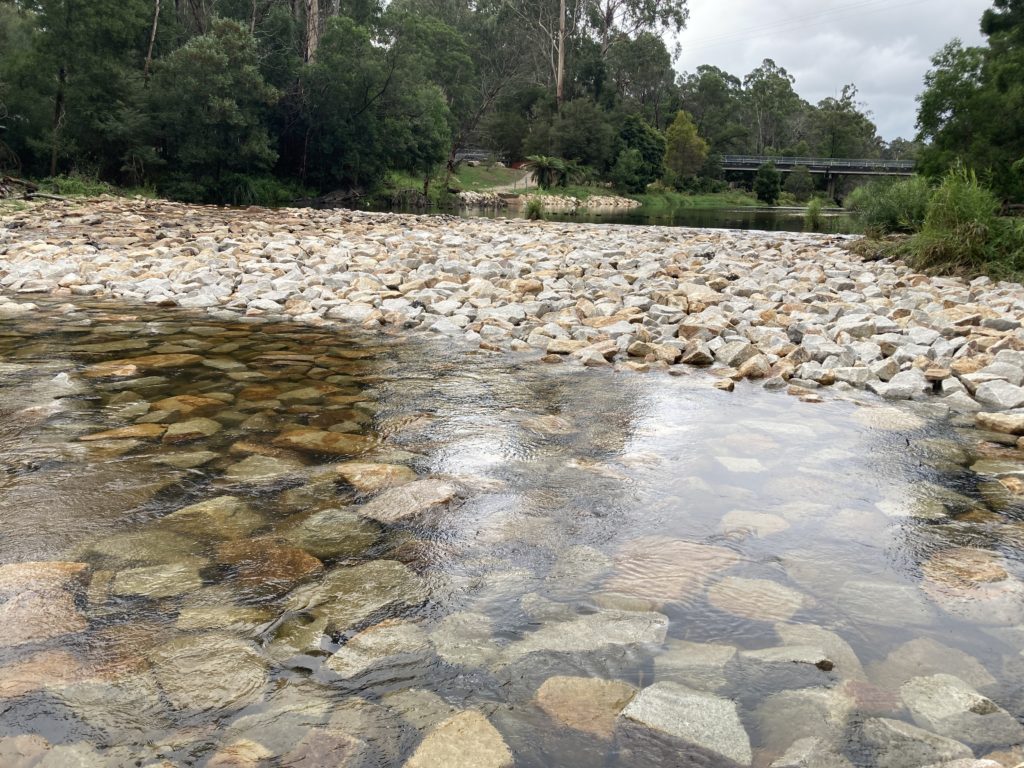

The East Gippsland Catchment Management Authority (CMA) recently hosted some environmental tours on the Wallagaraugh River, offering community members an opportunity to learn about waterway health in the Far East and the various projects the East Gippsland CMA is involved in.
The tours, aboard the Gypsy Princess, departed from the confluence of the Genoa and Wallagaraugh Rivers at Gipsy Point. Participants travelled upstream, passing private properties, and entering the lush, intact forested areas of the upper Wallagaraugh River.
Exceptional conditions allowed the community to reach the most upstream point of the Wallagaraugh River accessible by boat. Here, participants were treated to the sight of a lush rainforest where freshwater spills over a set of rapids.
Over the course of both days more than 25 species of birds were observed. Bryce Watts-Parker from the East Gippsland CMA provided insights into the local flora and fauna, bushfire recovery efforts, and the history of the area.
Great feedback was received from participants commenting that they thoroughly enjoyed their day out on the river.
Bec Hemming, CEO of the East Gippsland CMA said “We would like to thank all community members for their enthusiasm and interest in the boat tours.”
“The success of these tours underscores the importance of community engagement in preserving and understanding our precious waterways.”
Tours like this are made possible with Bushfire Recovery funds from the Victorian Government.


Locals were treated to an evening cruise on the Tambo River on a very warm evening to learn about river health.
Hosted by the East Gippsland Catchment Management Authority (CMA), the time spent on the boat offered insights into current river health projects being undertaken along the river.
Throughout the cruise, people engaged in discussions, gaining firsthand knowledge from East Gippsland CMA staff about factors influencing river health, including the history of the river, current bank stabilisation work, and the value of fencing off the riverbanks and planting native vegetation to protect the banks from erosion.
As the boat ventured towards the mouth of the Tambo and Jones’ Bay, discussions turned to the Gippsland Lakes and the programs underway to improve the health of the Lakes.
“Bringing people together and closer to where the work is happening gives them a better understanding of what the CMA and partners are doing to improve the health of our waterways.” Said East Gippsland CMA’s CEO, Bec Hemming.
“Our staff are keen to talk to people in our community and answer any questions. These boat tours offer that face-to-face interaction, which we think is important in keeping people informed and hearing from the community about their own knowledge.”
The East Gippsland CMA and partners have undertaken many types of projects on the Tambo River, including installing fish habitats, fencing, weed control and bank stabilisation projects. Tours like this are made possible with Bushfire Recovery funds from the Victorian Government.

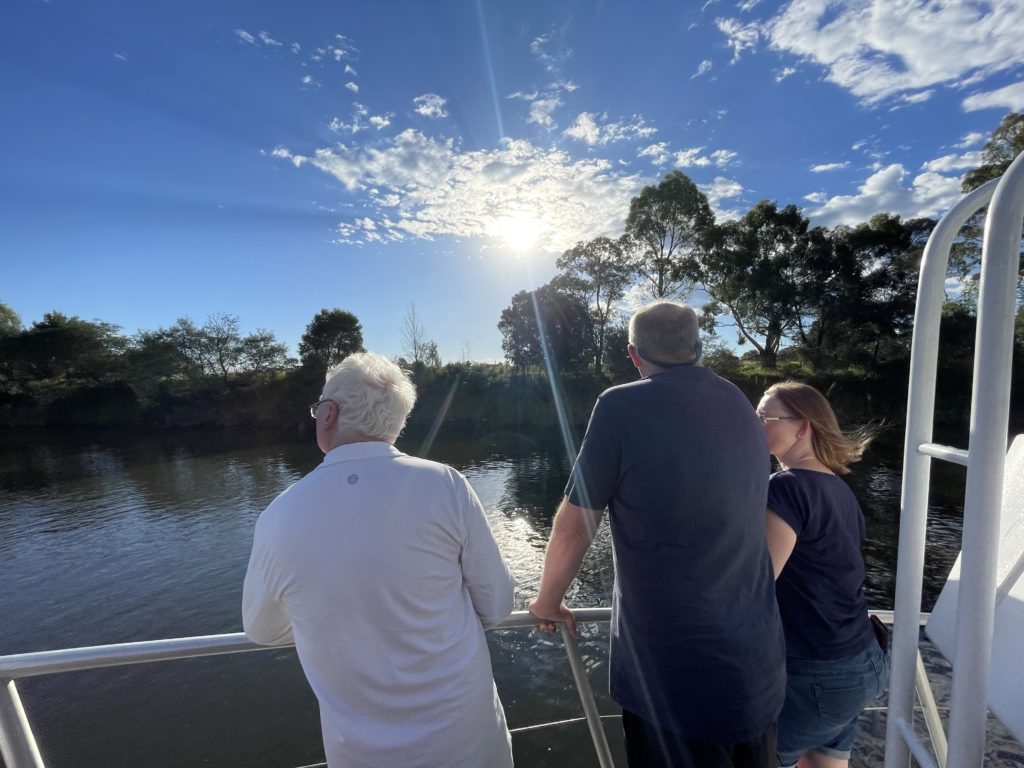
Watch this Buchan River Fishway video to hear about the construction of the Buchan River Fishway.
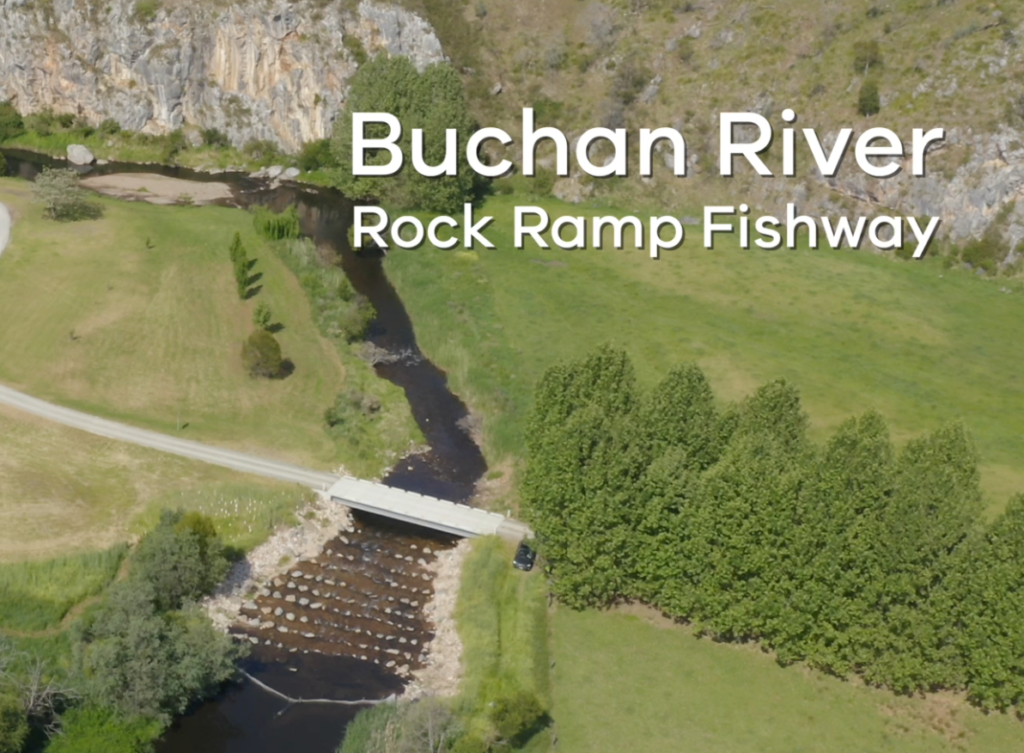
A leader in innovative river management has been recognised for 25 years making East Gippsland’s rivers healthier and its communities more resilient.
The East Gippsland Catchment Management Authority (CMA) congratulates long-time employee Rex Candy for being awarded the Public Service Medal in the Australia Day 2024 Honours List (Meritorious Awards) for his contributions to waterway management.
After graduating from the University of Melbourne Rex commenced his career with the (former) State Rivers and Water Supply Commission, before bringing his passion for rivers and engineering together as a river engineering consultant. And for the past 25 years, Rex has led the change in waterway management practices during his career with the East Gippsland CMA.
He has strongly advocated for a new approach to river restoration and has been instrumental in a change that has made our rivers healthier.
This has included flood and bushfire recovery, providing technical assessments on flood behaviour, and leading the stabilisation of rivers across the state. Highlights of his work include programs to rehabilitate the Snowy, Genoa and Cann Rivers in East Gippsland.
A standout example is the work Rex did after major flooding in the Cann River in 1998. The flood worsened erosion which had seen the river channel expand by up to four times its original width. The local community and landholders were at a loss as to how to deal with the damage and what to do next.
As the Operations Manager for the East Gippsland CMA, Rex led engagement with the traumatised community to propose new ideas, change the way things had been done, and work together to improve the situation.
Rex rallied landholders along the Cann River, securing their commitment to help set the river on a new recovery trajectory. These efforts included stabilising the bed and channel of the river and addressing the deepening and widening of the river channel.
Rock and timber structures were introduced to slow water, encourage sediment deposition, and reduce further deepening of the riverbed. Additionally, fencing was installed along the floodplain to exclude stock from the river, while native vegetation was restored to facilitate natural recovery processes.
After 25 years, the health of the Cann River is improving. A continuous native vegetation corridor extends along the entire river. The river is functioning as a natural river system once again.
When the 2019/20 black summer fires swept through the Cann Valley, engulfing forests surrounding the township, the river was a blessing for the community. It was a place for them to feel safe, and the water was also relied on as a critical water source for fire suppression.
The rivers of Gippsland wouldn’t be what they are today without Rex’s expertise. His achievements and successes over the past 25 years are evident in the health and ongoing rehabilitation efforts in the Cann, Snowy and Genoa Rivers.
In retirement, Rex remains a key technical expert in river health and floodplain management. He is still called upon to provide his skills and knowledge to complex expert panels, hearings and recovery efforts following impacts and disasters, such as major flooding and landscape scale bushfires.



